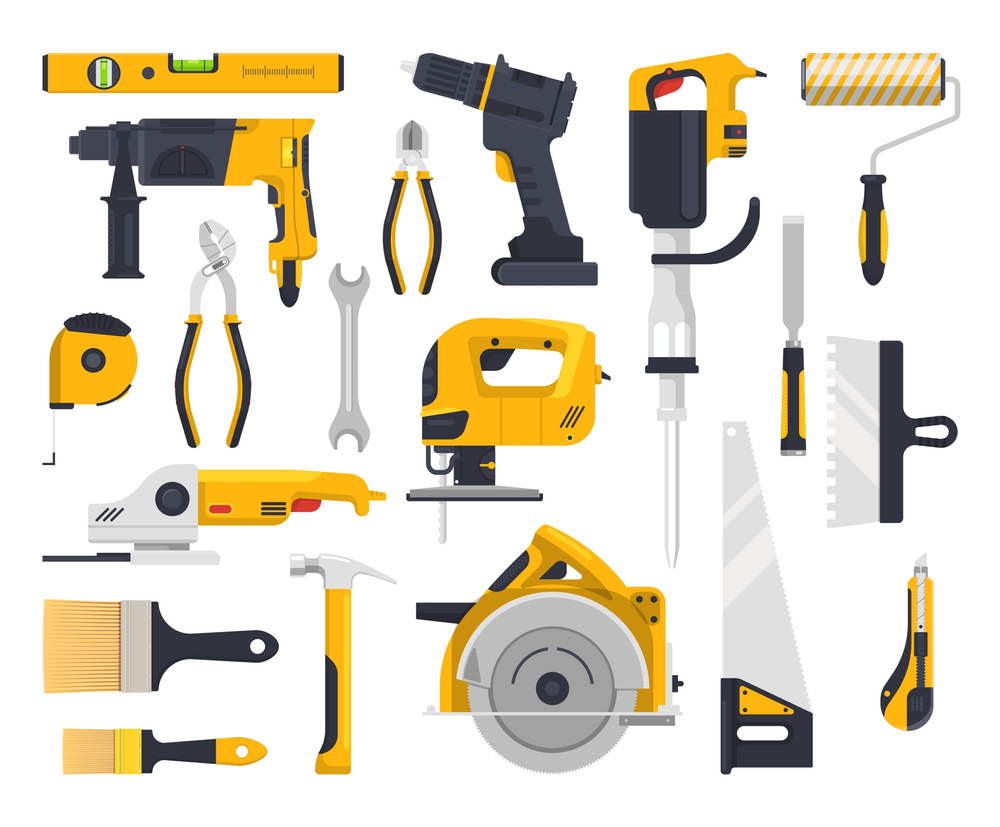Woodworking can be a rewarding and satisfying hobby or profession, allowing you to create functional or decorative pieces out of wood. However, to get started in woodworking, you will need a basic set of tools that will help you cut, shape, and join pieces of wood. In this article, we will cover the most essential hand tools, power tools, measuring and marking tools, and workshop setup and organization for woodworking.
Contents
Hand tools
Hand tools are tools that are powered by your own physical strength and dexterity, rather than by electricity or other sources of power. Here are some of the most essential hand tools for woodworking:
- Chisels: Chisels are used for cutting and shaping wood. They come in various sizes and types, such as bevel-edged chisels for general use, paring chisels for fine work, and mortise chisels for cutting mortise joints.
- Hammers: Hammers are used for driving nails and pegs, as well as for shaping and forming wood. The most common types of hammers used in woodworking are framing hammers and finishing hammers.
- Handsaws: Handsaws are used for cutting wood to length and making rough cuts. There are several types of handsaws, including crosscut saws, rip saws, and coping saws.
- Planes: Planes are used for smoothing and shaping wood surfaces. They come in various sizes and types, such as block planes, smoothing planes, and jack planes.
- Screwdrivers: Screwdrivers are used for driving screws into wood. They come in various sizes and types, such as Phillips head screwdrivers and flathead screwdrivers.
Power tools
Power tools are tools that are powered by electricity, gasoline, or other sources of power. They can make woodworking tasks faster and easier, but they also require proper handling and maintenance to avoid accidents. Here are some of the main types of power tools used in woodworking:
- Circular saws: Circular saws are used for making straight cuts in wood. They can be handheld or mounted on a workbench, and they come in various sizes and types, such as worm drive saws and sidewinder saws.
- Jigsaws: Jigsaws are used for making curved cuts and intricate shapes in wood. They are handheld tools with a reciprocating blade that moves up and down.
- Routers: Routers are used for shaping and edging wood, as well as for creating decorative patterns. They come in various sizes and types, such as plunge routers and fixed base routers.
- Sanders: Sanders are used for smoothing and finishing wood surfaces. They come in various sizes and types, such as orbital sanders and belt sanders.
Measuring and marking tools
Accurate measurements and markings are crucial for ensuring that your woodworking projects turn out as planned. Here are some of the essential measuring and marking tools for woodworking:
- Rulers: Rulers are used for measuring length and width. They come in various sizes and types, such as wooden rulers and metal rulers.
- Tape measures: Tape measures are used for measuring longer distances and around curves. They come in various lengths and types, such as metric tape measures and imperial tape measures.
- Squares: Squares are used for marking and checking right angles. They come in various sizes and types, such as try squares and combination squares.
What is a Protractor
A protractor is a device used for measuring and drawing angles. It consists of a flat, circular or semicircular piece of transparent material, usually plastic or glass, with a straight edge and a pivot point at the center.
Protractors are commonly used in geometry, drafting, and engineering to measure and draw angles. They are also used in woodworking and metalworking to set the angle of saw blades and other cutting tools.
To use a protractor, you place the pivot point at the vertex of the angle you want to measure, and align the straight edge with one of the sides of the angle. The degree measurement of the angle is then indicated by the degree markings on the protractor. Some protractors have degree markings on both sides of the pivot point, allowing you to measure angles greater than 180 degrees.
Protractors come in various sizes and shapes, including circular protractors, semicircular protractors, and digital protractors. Digital protractors use electronic sensors to measure angles and display the results on a digital display, making them more accurate and convenient to use than traditional protractors.
In addition to measuring angles, protractors can also be used to draw angles. To do this, you place the pivot point at the vertex of the angle you want to draw, and use the straight edge to draw one side of the angle. You can then use the degree markings on the protractor to draw the other side of the angle to the desired degree measurement.
Protractors are a useful and versatile tool for measuring and drawing angles in a variety of fields and applications.
What is a Sliding Bevel
A sliding bevel, also known as a bevel gauge or angle finder, is a hand tool used for measuring and setting angles. It consists of a handle with a blade attached to it by a pivot point, and a locking mechanism that holds the blade at a specific angle.
Sliding bevels are commonly used in woodworking, metalworking, and engineering to transfer angles from one piece of work to another, or to set the angle of saw blades and other cutting tools. They are also used in drafting and drawing to create angled lines and shapes.
To use a sliding bevel, you place the blade against the surface of the workpiece at the desired angle, and adjust the blade until it is parallel to the surface. You can then lock the blade in place using the locking mechanism, and use the blade as a reference to mark or cut the workpiece at the desired angle.
Sliding bevels come in various sizes and shapes, including circular sliding bevels, straight sliding bevels, and digital sliding bevels. Digital sliding bevels use electronic sensors to measure angles and display the results on a digital display, making them more accurate and convenient to use than traditional sliding bevels.
In addition to measuring and setting angles, sliding bevels can also be used to check the accuracy of angled cuts and joints. To do this, you place the blade against the edge of the cut or joint and adjust the blade until it is parallel to the edge. You can then compare the angle of the blade to the desired angle to determine if the cut or joint is accurate.
sliding bevels are a useful and versatile tool for measuring, setting, and checking angles in a variety of fields and applications.

